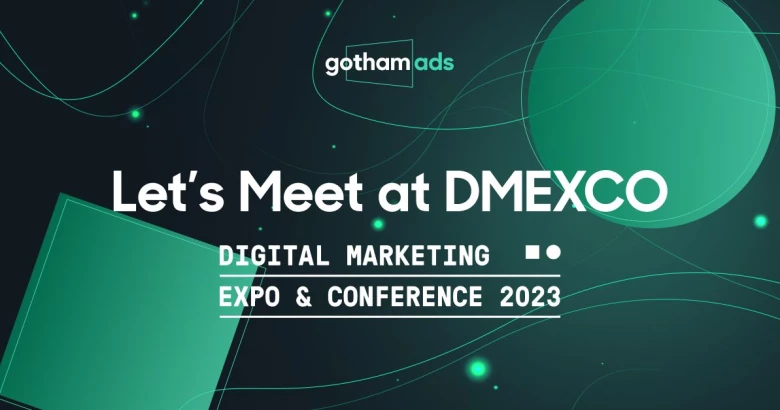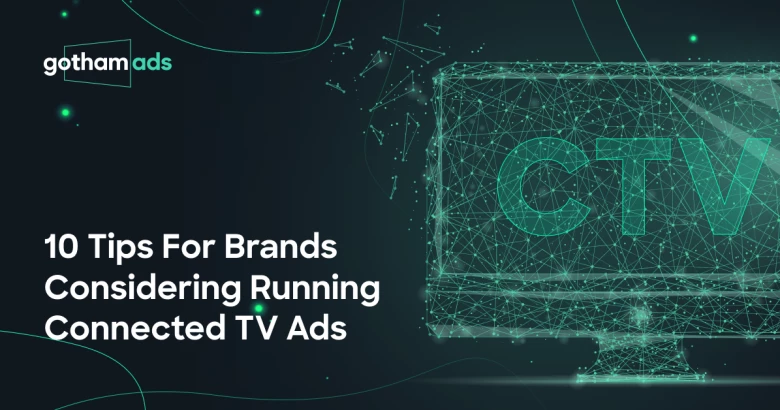From Standard Tools to Innovative Assistants
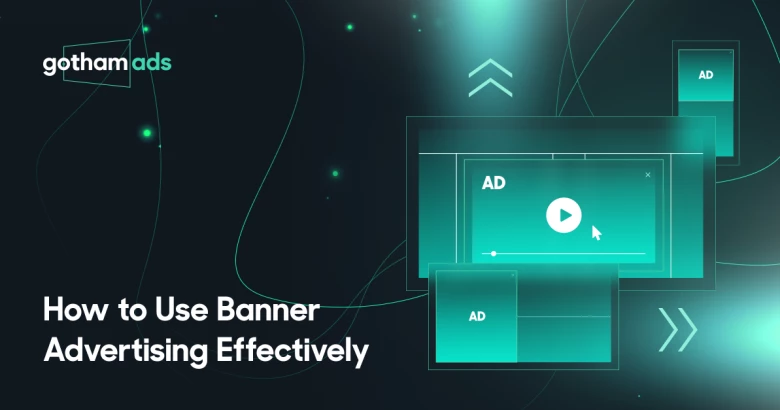
Banners were the first type of advertising that appeared on the internet back in 1994. Today display is the second most invested-in digital advertising format in the United States. In 2022, banner ad spending reached $58 billion, accounting for over 30 percent of U.S. digital ad spending and trailing only behind search advertising by 10 percentage points. Industry projections indicate that this expenditure will continue to grow at a steady pace, expected to exceed $78 billion by 2026.
How Banner Programmatic Advertising Works
Banner programmatic advertising automates the buying and selling of online ad space, leveraging data and technology to make ad placements more efficient and targeted. This process allows advertisers to purchase ad space in real-time, based on specific criteria, without traditional manual negotiations.
There are three common methods to calculate the payment for host sites:

Ultimately, the payment approach you choose will depend on a variety of business factors, including your budget and your banner ad campaign goals.
Standard Banner Ads Sizes
One of the key factors affecting the effectiveness of your campaign is the dimensions you select for your advertising. The appropriate size and design can significantly influence the click-through rate and overall performance of your ad Here are the most common ad sizes chosen by advertisers:
Leaderboard (728x90 pixels). Typically placed at the top of a webpage, this format is highly visible to users when they first visit a site.
Medium Rectangle (300x250 pixels). One of the most popular ad sizes, often found embedded within text content or at the end of articles. It's well-suited for both desktop and mobile platforms.
Wide Skyscraper (160x600 pixels). A tall and narrow ad format usually placed on the sides of webpages, making it visible without interrupting the main content.
Large Rectangle (336x280 pixels). Slightly larger than the Medium Rectangle, this size allows for more engaging ads without being too intrusive, often placed within text content or at the end of articles.
Half Page (300x600 pixels). Also known as a Large Skyscraper, this size offers a significant space for advertisers to get their message across and is typically placed on the sides of webpages.
Mobile Leaderboard (320x50 pixels). A smaller version of the traditional leaderboard, optimized for mobile screens to appear at the top or bottom of mobile websites or within mobile applications.
Billboard (970x250 pixels). A very large format that spans the top of webpages, offering high visibility and space for creative advertising content.
Small Square (200x200 pixels). Though less common, this compact size can fit into smaller spaces on webpages, making it versatile for various layouts.
Most Effective Types of Banner Ads
Animate Banner Ads
Animated banner ads are a type of digital advertising that incorporate moving graphics, text, or animation to capture the attention of the audience more effectively than static images. These animations can be simple or complex, ranging from animated GIFs to sophisticated HTML5 animations. The movement in the ad is designed to stand out on a webpage, drawing the viewer's eye and potentially increasing engagement and click-through rates.
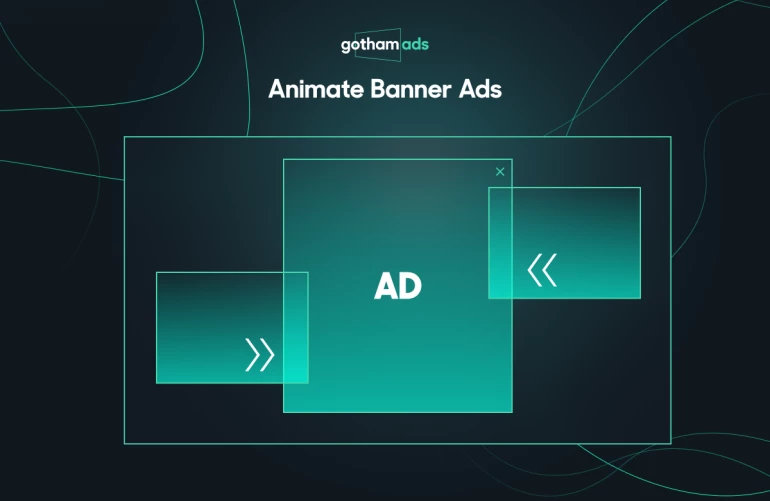
Advantages:
- Increased engagement
- Better storytelling
- Highlighting key messages
- Creative flexibility
Disadvantages:
- Potential annoyance
- Slower load times
- Distraction from content
- Compatibility issues with older devices or browsers
- Higher production costs
Expandable Banner Ad
Expandable ads are a form of interactive advertising that can increase in size when a user clicks on them or hovers over them. Initially appearing as a standard banner size, these ads expand to reveal more information, often filling a larger portion of the screen with multimedia content like video, audio, or other interactive elements. This format allows advertisers to provide a more immersive and engaging experience without navigating the user away from the original webpage.

Advantages:
- Increased engagement
- More space for creativity
- Higher user control
- Better tracking and analytics
Disadvantages:
- Potential user annoyance
- Compatibility issues across different devices or browsers
- Higher production costs
Lightbox Banner Ad
Lightbox banner ads are a form of interactive advertising found on websites and social media platforms. These ads expand and become interactive when the user engages with them, typically by hovering the mouse over the ad for a few seconds or clicking on it. Once expanded, Lightbox ads can display a wide range of content, including videos, images, maps, or even mini-games, offering a richer and more engaging experience than standard banner ads.

Advantages:
- Higher engagement
- Rich media content
- Better user experience
- Improved targeting
- Measurable performance
Disadvantages:
- Higher costs
- Design and development resources
- Potential for user annoyance
- Loading time
Pop-Up Banner Ad
This type of online advertising that suddenly appear (or "pop up") in a new browser window or tab in front of the website content a user is viewing. Despite their declining popularity due to user experience concerns and the advent of pop-up blockers, pop-up ads have been used for many years to grab attention and prompt immediate action from users.

Advantages:
- High visibility
- Immediate attention
- Flexibility
- Effective for certain goals
Disadvantages:
- User annoyance
- Impact on user experience
- Potential for penalty. Some engines have policies against intrusive interstitials. Websites that use pop-ups in a way that disrupts the user experience can be penalized in search rankings.
Run of Site Banner Ad
Run of Site (ROS) banner ads refer to a type of online advertising placement where an advertiser's banner ads are displayed across various pages within a website, without specific targeting to particular sections or types of content. This approach contrasts with more targeted ad placements, such as Run of Category (ROC), where ads are shown only within specific sections relevant to the ad's content.
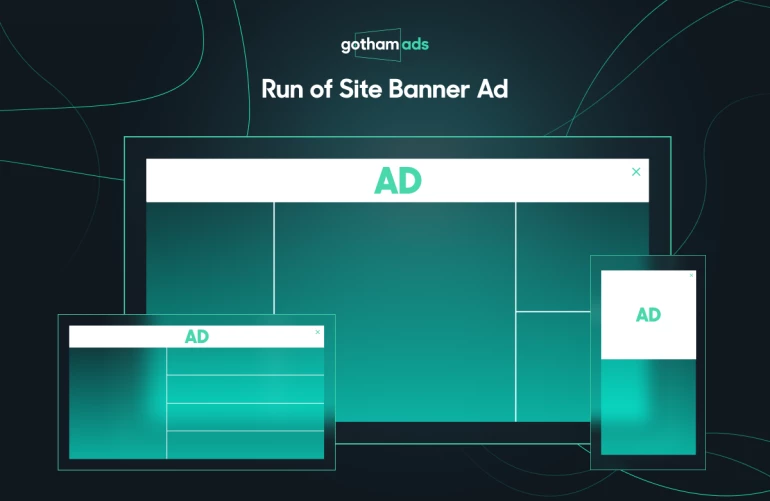
Advantages:
- Broad exposure
- Cost-effectiveness
- Simplicity
- Increased impressions
- Flexibility
Disadvantages:
- Lack of targeting
- Lower click-through rates
- Reduced ROI
- Risk of ad fatigue
Sticky Ad
As consumers increasingly accept online advertising as a form of payment for accessing free content, the urgency to discover effective methods for capturing their attention intensifies. One such method is sticky advertising. This advertising strategy involves ads that follow the reader on the side of the screen as they scroll through content.
A study by Medium reveals that sticky advertising garners nine times more clicks compared to traditional banner ads. Furthermore, it holds the viewer's attention 300% longer in real-time observation. Sticky ads maintain viewer engagement by generating a second surge in views when they change halfway through the article.

Advantages:
- Fresh and new approache
- Higher viewership
- Increased impressions
- Flexibility
- Higher engagement
Disadvantages:
- Higher costs
- Design and development resources
- Potential for user annoyance
- Loading time
Video Banner Ad
Video banner ads incorporate video content within a banner ad format, offering a more dynamic and engaging user experience compared to static images or text. These ads can autoplay when in view or require user interaction to play and are commonly found across websites, social media platforms, and video hosting sites.
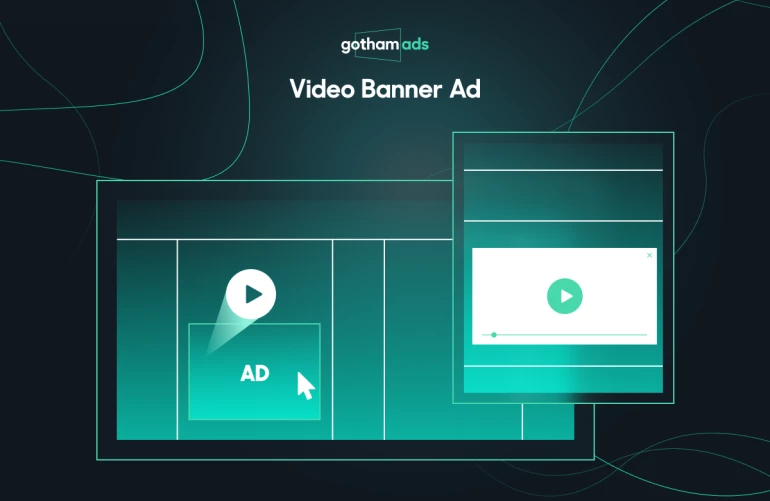
Advantages:
- Higher engagement
- Rich media experience
- Better message retention
- Increased conversion rates
- Targeted content delivery
Disadvantages:
- Higher production costs
- Longer load times
How to Get Started with Banner Advertising
There's no one-size-fits-all recipe for advertising campaigns. However, there are several insights that can help you achieve desired results.
Firstly, it's crucial to define your brand's goals and objectives. Determine what success means for your banner ad campaign and what action you want viewers to take after seeing the ad. Clear objectives will guide the campaign's direction and measurement of success.
Next, establish a budget. Before initiating your banner ad campaign, decide on your investment level. Knowing your budget upfront helps allocate advertising spend effectively and sets financial boundaries for the campaign.
The third step involves identifying the target audience. Ask yourself, "Who is the ad meant to reach?" Having a clear understanding of your intended audience is pivotal for the ad's overall success, as it influences the messaging, design, and placement of the ad.
Then, craft the right call to action (CTA). Determine what you want viewers to do upon seeing your ad—whether it's to learn more about your brand, visit your website, or subscribe to a newsletter. A compelling CTA is essential for converting viewers into leads or customers.
Additionally, design impactful ad creative. The visual elements of your banner ad, including the use of brand logos, high-quality images, legible text, and consistent company branding, should align with both your business goals and creative vision. Effective creative design captures attention and reinforces your brand message.
Incorporating these steps into your strategy will lay a solid foundation for your banner advertising campaign, ensuring that the creative visuals and messaging align with your business objectives and resonate with your target audience. By carefully planning and executing these elements, you can create a banner ad campaign that drives traffic, generates brand awareness, and achieves your desired outcomes.
Banner display ads serve as a potent tool for marketers aiming to connect with their target audience, enhance engagement, and generate leads. Regardless of the type or format of the ad, success hinges on adopting a strategic approach that considers key factors such as audience personalization and ad placement. By experimenting with your display ads and integrating these best practices into your strategy, you can craft an effective campaign that yields outstanding results. Build better banner advertising for your business with GothamAds.
FAQ
What is banner advertising?
Banner advertising is a type of display advertising that appears along the top, side, or bottom of a website, aiming to drive traffic to the advertiser's own site, generate awareness, and enhance overall brand consideration.
What types of banner advertising are most effective?
- Animate Banner Ads
- Expandable Ad
- Lightbox Banner Ad
- Pop-Up Banner Ad
- Run of Site Banner Ad
- Sticky Ad
- Video Banner Ad
How to get started with banner advertising?
- Define your brand's goals and objectives.
- Establish a budget.
- Involve identifying the target audience.
- Craft the right call to action (CTA).
- Design impactful ad creative.
- Build better banner advertising for your business with GothamAds.

